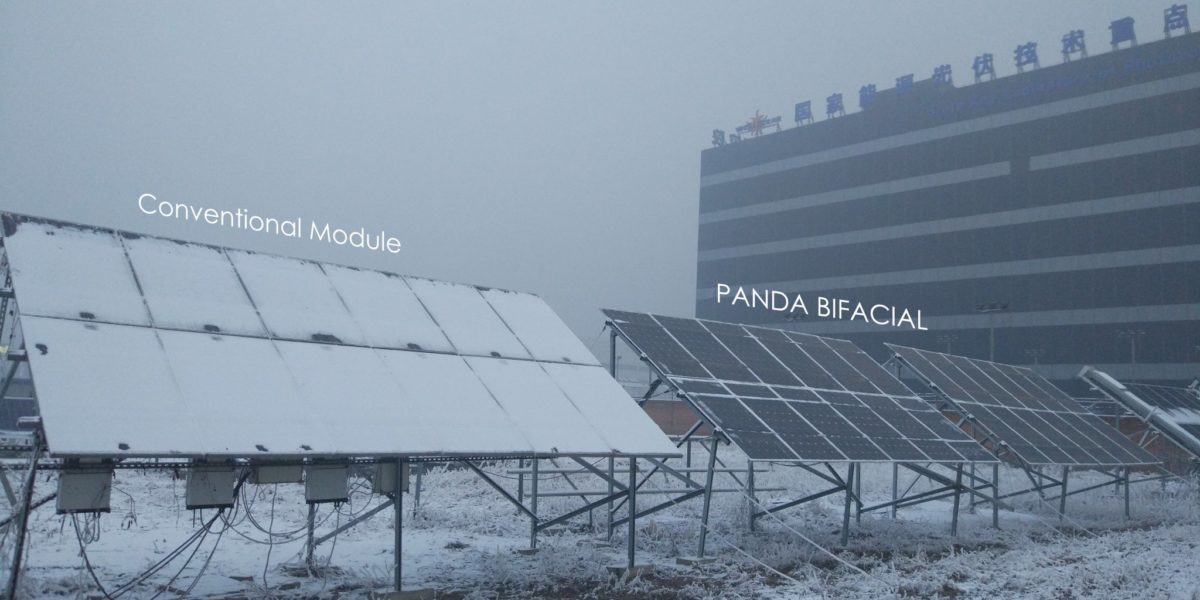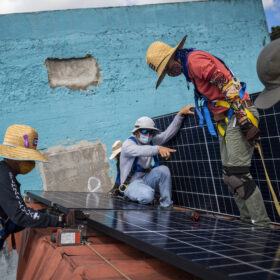New York state has its own Green New Deal that is currently soliciting 1.5 TWh of solar and wind, as well $280 million in energy storage. As we know, the sun shines in the daytime, and this leads to ducks curves in California, and more recently New England. Now and hereafter, will be the challenge of how to manage this excess solar electricity, this manna from heaven.

In the paper Strategic planning for utility-scale solar photovoltaic development – Historical peak events revisited, researchers at Cornell University have modeled 4.5, 6 and 9 GWac of installed solar power in the state of New York with a goal of generating a GIS-based siting approach for solar projects 2 MWac and greater. The model used parcel-level filtering based on population and resource ranking, accounted for temporal generation, and estimates the locational impact on peak load and ramping requirements during high electricity demand days. The tool hopes to assess the current valuation methods for installed solar capacity, and offers support to system designers seeking to optimize deployment.
The modeling suggests that the 678 highest-ranked sites fulfill the 4.5 GW capacity scenario, while the 6.0 GW and 9.0 GW scenarios needed 920 and 1320 sites, respectively.

The researcher suggests that across New York a wealth of low-value land exists to support utility-scale solar PV, and that generation from these resources can reduce peak demand by up to 9.6% under the 9000 MW scenario. In addition, peak demand reduction displays locational and temporal dependency. Data from previous years shows that a solar farm can meet 10-74% of local demand during the peak hour on summer hot summer days, when electricity demand is at its highest.
However, during the wintertime the demand curve flattens during the daytime (below image), and regional ramping requirements may increase by up to 151% during sunny winter days. This doesn’t occur during the summer time because the demand curve drives upward much greater due to air conditioning usage and the solar volumes have a lesser effect.

The researchers found that because developers cannot predict performance during the annual system peak, current capacity valuation methodologies for solar projects may not be adequate to promote a healthy competitive market for solar. And that by incorporating a broader spectrum of peak demand conditions into variable resource capacity valuation would improve strategic planning but across growing solar markets worldwide.
Recently, New York has transitioned away from net metering to a the Value of Distributed Energy Resources (VDER) framework, which seeks to encompass locational, temporal, and environmental values provided by DERs. The rollout has been rough, with ongoing tweaks. In the context of these ongoing deliberations, the results of this study were shaped to support the actions of state regulators.
This content is protected by copyright and may not be reused. If you want to cooperate with us and would like to reuse some of our content, please contact: editors@pv-magazine.com.








Since winter solar makes 30%? of summer peak, not sure how this is a problem since even the 9Gw rated solar is only producing 3-4Gw for fewer hours?
And in 10 yrs NY, as most places buildings, homes, businesses all competitive ones, will have a combo of CHP, battery, heat, cold storage plus private, etc EVs both sucking excess power and generating on demand power along with solar, small wind will supply a large part of the load and supply to, from the grid.
Now add insulation, other NY, NYC code improvements to existing buildings they just passed and too much solar or any excess power shouldn’t be a problem because going RE cost 50% or less as much as FF energy.
Good article. But at some point, we will have to start considering the future “all electric” market which will in Winter produce a larger overnight load and an AM peak as residential heating is converted to Heat Pumps (VRF geothermal, e.g. Google’s Dandelion – https://dandelionenergy.com). This future is not that far off, and its implications for the PV/RE markets needs to become better understood lest opportunities in the present to build toward that load profile are missed.